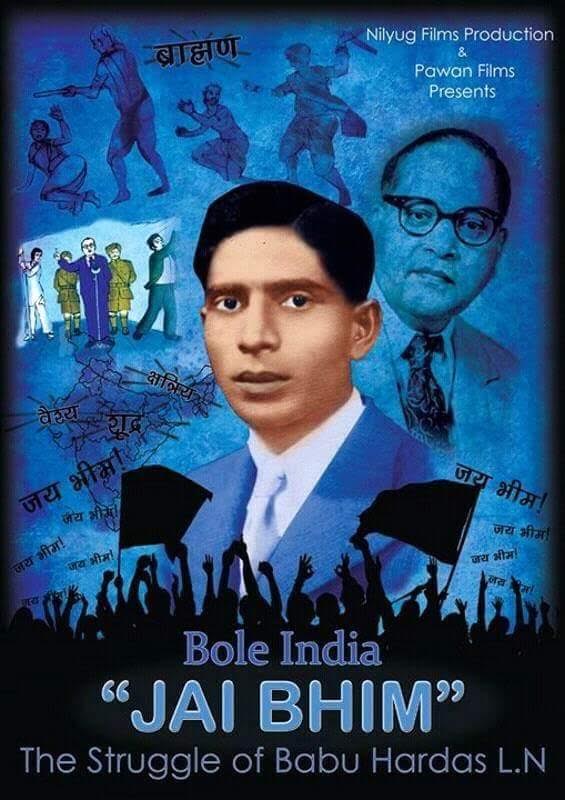Vidyasagar
 Introduction
Introduction
The entire human civilization is passing through the most painful and catastrophic tragedy of the 21st century. The pandemic ‘COVID-19’ has spread across the world and millions of human beings are suffering for their survival. This global health crisis has compelled us to think about the future of human civilization. Competitive capitalism and blind exploitation of nature have brought the world to the brink of danger. Globalization and modernization are rapidly capturing human emotions under their control. The hegemonic capitalist ideology is solely responsible for this crisis. In such a civilizational crisis, B.R. Ambedkar’s idea of humanity becomes highly relevant for the world.
In the academic discourses, Ambedkar has rarely been seen in the framework of the environment, as much as Gandhi and Nehru have drawn the attention of scholars. In a broader sense, this article explains why Ambedkar has not found a place in the contemporary canon of Indian environmentalists and nature writers. Though, Ambedkar has immensely contributed to the domain of environment and nature through his scholarly writings. Mukul Sharma argues that ‘Ambedkar’s engagement with the environment question has been relatively unexplored, even when his thoughts and interventions on nature, village, land, agriculture, water, community, industry, technology and science are some of the enduring issues of India’s environmental and political traditions.’
Most of the Indian tradition of environmental study deals with elite environmental politics which is highly biased and casteist. Such study never talks about dalit-bahujan communities. In Mukul Sharma’s words, ‘dalits have often participated in significant numbers in various environmental movements, they have been as a category largely missing in most studies. There appears to be an environmental blindness on questions of caste.’ But in Ambedkar’s writings, Dalit perspective becomes a new lens to locate the question of environment and nature.
Ambedkar’s idea of nature was very different from contemporary thinkers like Gandhi and Nehru. Ambedkar’s imagination of nature and environment was based upon his experience of everyday life. For Ambedkar, injustice and discrimination were not just limited to the material distribution of resources. Natural and environmental resources too were distributed unequally among the marginalized sections of society.
Ambedkarite Understanding of Environment and Nature
Ambedkar’s idea of environment and nature can be located very differently from existing discourses of environment and nature. The dominant discourses of environment and nature are embedded with the values of Brahmanism and caste prejudices. For Ambedkar, the experience of environment manifests through various activities performed every day by human beings in a hierarchical society. The segregated environmental spaces and unequally distributed natural resources are the key indicators of injustices imposed on the marginalized sections of society. In his writings, Ambedkar argues that ‘the exclusion of dalits from resources was operationalized and legitimized by a system of graded inequality that was sanctioned by the Brahminical traditions that he identified as forming the theoretical core of what we now identify as Hinduism.’
Natural resources like water, rivers, land, ponds etc., are not equally accessible for every section of society. In his memoir Waiting for a visa, Ambedkar says ‘…there was hunger burning within us; with all this, we were to sleep without food; that was because we could get no water, and we could get no water because we were untouchables…’ Such manifestation of injustice, discrimination and violence are common in day to day experience of marginalized people. V.M. Ravi Kumar argues that ‘Ambedkar’s sensitivity toward exclusion of dalits from ecologically important resources can be observed at two levels; his ideas on the exclusion of dalits from possessing land, and his reflections on the nexus between caste system and access to forest and water.’ For Ambedkar, we cannot understand environment and nature without giving appropriate attention to the lower strata of society, to either the caste structure of India or the racial structure of the west. The application of Ambedkar’s perspective of the environment implicitly points out that society and environment cannot be studied separately.
In contemporary environmental discourse, modernity becomes the principle paradigm to understand nature and the environment. In Indian environmental tradition, Gandhi and Ambedkar have drawn the attention of scholars. Contrary to Gandhian tradition, Ambedkar laid down the wider framework of the environment which is humanistic. Ambedkarism stands with the idea of modernity which has the elements of scientific temperament, equality, justice and fraternity. Ambedkar believes that the process of modernization would enable dalits’ emancipation. This process leads toward the sustainable development of the environment.
The paradox of Brahmanical environmental intellectuals is that they critique the process of modernization and support the Gandhian tradition which is based on the ghettoization of the natural landscape and discrimination in distribution of ecological resources. Ambedkar firmly believes that only the just distribution of natural resources can shape a democratic-egalitarian society. Otherwise, such injustices lead toward the exploitation of marginalized sections of society. Ambedkar’s writings produced the alternative tradition of environmentalism and dalit critiques of elite Brahmanical environmental discourses.
Conclusion
The contemporary environmental crisis has provoked us to think about the emerging challenges of ecology and nature. In Indian tradition, Ambedkar provides a new alternative knowledge of environment and nature which is an inclusive and sustainable model of the environment. His thoughts propose a new vocabulary of natural and social ecology and it needs to blend with everyday dynamics of societal relations with the environment. Ambedkarism stands with egalitarian values, a scientific temperament and modernity which lead toward a just society.
Therefore, Ambedkar’s scholarship must go beyond the boundary of caste, class, gender etc. Ambedkar’s contribution cannot be confined to any academic discipline. We need to understand his philosophy in a broader framework that includes environmental study as well. Finally, Ambedkar’s philosophy of environment and nature laid down a theory that injustice, whether it is natural or material, cannot be justified.
~
References
* Ambedkar, B. R. (2005). Waiting for a Visa. Prakash.
* Kumar, V. R. (2016). History of Indian Environmental Movement: A Study of Dr BR Ambedkar from the Perspective of Access to Water. Contemporary Voice of Dalit, 8(2), 239-245.
* Kumar, V. R. (2014). Green Democracy: Relevance of Ambedkar’s. Indian Journal of Dalit and Tribal Studies and Action, 2(1).
* Kumar, V. R., & Swaroop, A. Ambedkar and Ecology: A Study Of Buddha and his Dharma.
* Kumar, V. R. (2018). Contested Ecology: A Study on Gandhi and Ambedkar Debate from Ecological Perspective.
* Sharma, M. (2017). Caste and nature: Dalits and Indian Environmental Policies. Oxford University Press.
* Sharma, M. (2012). Dalits and Indian environmental politics. Economic and political weekly, 46-52.
* Sharma, M. (2016). Ambedkar and the environmental traditions.
* https://www.sabrangindia.in/article/ambedkar-and-environmental-tradition
* https://www.caritasindia.org/tribal-people-have-a-crucial-role-in-environment-conservation/
~~~
Vidyasagar is working as a Junior Research Fellow at the Department of Political Science, University of Delhi.










